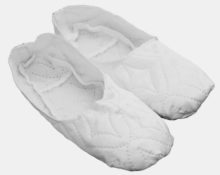Many people have heard about the perfectionism and cleanliness of the Japanese. Technological progress allows us to turn things that are ordinary for us into a real miracle.
For example, on some trains you can turn your seat around to admire the view from the window. The toilet in Japan is one of the calling cards of the country - the toilets are automatic, the stalls are equipped with chairs for children, and there is also a flushing function. And this is all a public toilet. What then can we say about home?
Their home toilets are no less sophisticated, but the Japanese have features of everyday life that seem strange to us and at the same time good.
Oddities of life in Japan
To work at the computer while lying down, the Japanese have come up with special stands. The person lies on his stomach, and his torso is raised on a stand so that his hands remain free. There is no load on them, as if you had to lean on your elbows, which means your arms don’t get tired.
For tablet lovers, there is also a device - a tablet holder. It looks like a long floor lamp, only instead of a lamp and an openwork rim there is a claw holder.You can attach the gadget there and watch it while sitting or lying down, and your hands will be free.

Their indoor slippers are also not quite ordinary, or rather their purpose. The Japanese at home, school and even restaurants need to change into slippers before entering the building. Although it sounds quite common, there is a peculiarity here:
- after entering the room you need to take off your street shoes, go to the next level and only then put on your indoor slippers.
REFERENCE! In order not to carry dirt from the street, in Japan it is believed that you entered the room only when you stepped onto the raised floor with a change of shoes. And in institutions such as schools, kindergartens, restaurants, there are replacement shoes of standard size. The person does not have to wear a shift.
There are also diagonal zebra crossings at pedestrian crossings and a silent microphone. The latter is designed so that a person hears himself singing through an earphone. And those around you don’t hear it, thanks to the cone-shaped microphone.
Toilet slippers
You won’t surprise anyone with indoor slippers. But the Japanese did it, or rather with toilet slippers. The fact is that there is a real cult of ideal cleanliness in the country. They have the cleanest toilets, but for the Japanese it is still a dirty place. Technological progress is doing everything to reduce the number of times your body touches objects in the restroom.

Here are toilet slippers - another way to avoid touching toilet items. They are located at the entrance to the restroom and must be put on immediately. After the work is done, the slippers are taken off and put back in place. Thus, people try not to carry what may be in the toilet into their living rooms.
The slippers usually have symbols typical of a toilet on them, so you won’t be able to go out into the living room in them unnoticed. The owner of the house may consider such an act funny or offensive.
REFERENCE! Such slippers are common not only at home. In a Japanese hotel you will be given a pair of slippers for the toilet. You are not allowed to go to the restroom without them.
Last name on the house instead of a number
The number of a house in Japan is based on the date of its construction, or rather, they are numbered as they are built. So it turns out quite chaotic. Because of this, the Japanese themselves do not always find the desired address without GPS assistant.

Therefore, instead of a sign with a house number, the Japanese write their surname. This makes it much easier to find the home of the right person.
Sink on the toilet barrel
This is a salvation for people watching their water consumption. The usual lid on the toilet tank was replaced with a small sink. The drain leads into a tank, and there is a tap above the drain.

After rinsing, water does not automatically fill into the tank. A person washes his hands, and the used water flows into the tank. And then it is reused.
It is economical both in terms of utilities and in terms of space.


 0
0





